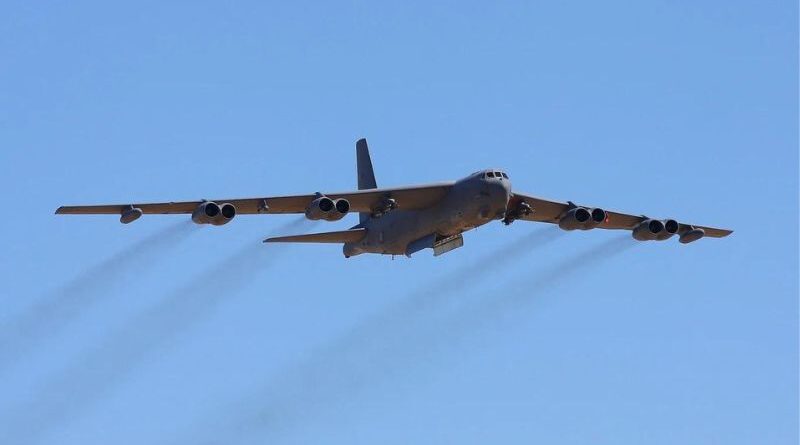Oldest Aircraft in the US Air Force – The United States Air Force (USAF) boasts a rich legacy in military aviation, with its roots tracing back to the formation of the United States Army Air Service in 1918. Over the decades, the USAF has witnessed remarkable advancements in aircraft technology. This outline explores the historical significance of the oldest aircraft still in service within the USAF, focusing on stalwarts like the Boeing B-52 Stratofortress and the Lockheed U-2 Dragon Lady. Beyond their enduring operational roles, these aircraft symbolize the Air Force’s journey from its early days to the forefront of military aviation. As we delve into their stories, we uncover the challenges of maintaining aging aircraft, appreciate their legacy, and ponder their role in shaping the future of the USAF.
Oldest Aircraft in the US Air Force
Boeing B-52 Stratofortress
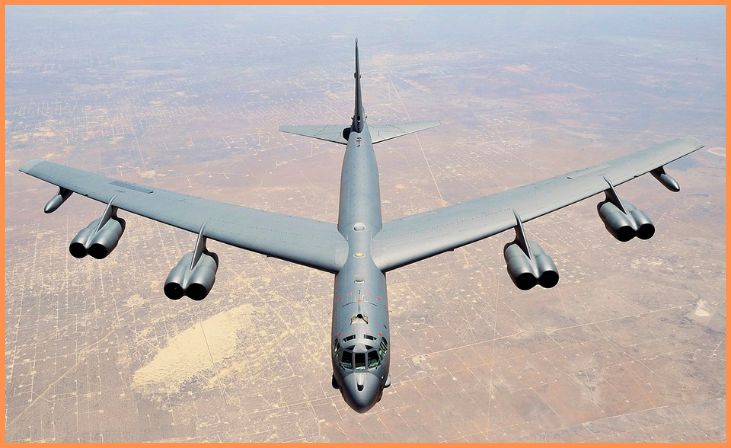
The Boeing B-52 Stratofortress, first flown on April 15, 1952, stands as a venerable long-range strategic bomber in the U.S. Air Force inventory. With a remarkable service history spanning several decades, the B-52 has undergone numerous upgrades to maintain its relevance and effectiveness. Notable for its iconic design and role in various conflicts, this aircraft remains a crucial component of the U.S. military’s global strike capabilities. Despite its age, the B-52 continues to serve as a symbol of enduring strength, adaptability, and longevity in the ever-evolving landscape of military aviation.
Also, Read – 7 Best Used Supercars To Buy If You’re On A Budget
Lockheed U-2 Dragon Lady

The Lockheed U-2 Dragon Lady, taking its maiden flight on August 1, 1955, is a high-altitude reconnaissance aircraft renowned for its intelligence-gathering capabilities. Operating at extreme altitudes, the U-2 has been a vital asset for strategic reconnaissance missions over the past several decades. Despite technological advancements, its unique design and capabilities remain relevant, making it an enduring platform for collecting critical intelligence. The U-2’s longevity in service underscores its exceptional performance in providing valuable information for national security, showcasing the aircraft’s resilience and ongoing significance in the U.S. Air Force’s reconnaissance capabilities.
Lockheed C-130 Hercules

The Lockheed C-130 Hercules, first flown on August 23, 1954, is a venerable military transport aircraft celebrated for its versatility and enduring service. Operating in various roles, including airlift and tactical missions, the C-130 has played a pivotal role for over six decades. Its robust design, capable of short takeoffs and landings, has made it indispensable for transporting troops, cargo, and performing humanitarian missions. The Hercules has undergone multiple upgrades, ensuring its adaptability and sustained relevance in modern military operations. As a workhorse of the skies, the C-130 continues to exemplify reliability and adaptability, remaining a cornerstone of global airlift capabilities.
Boeing KC-135 Stratotanker
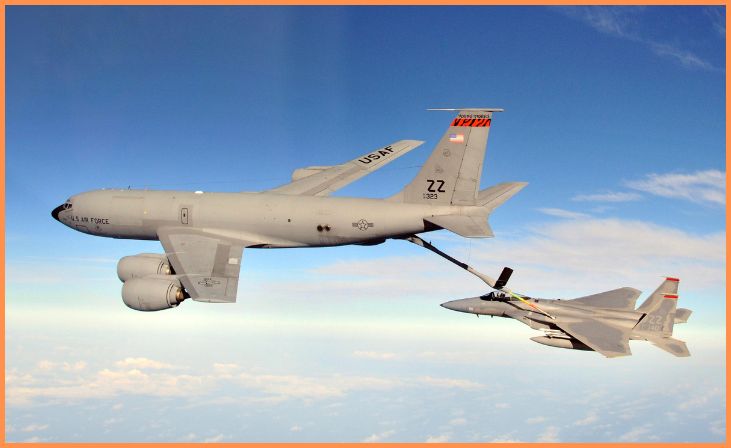
The Boeing KC-135 Stratotanker, with its inaugural flight on August 31, 1956, stands as a crucial aerial refueling aircraft in the U.S. Air Force fleet. Serving for over six decades, the KC-135 plays a pivotal role in extending the range and endurance of military aircraft during operations. Its adaptability and reliability have contributed significantly to the global reach of U.S. airpower. Despite its age, the Stratotanker remains a vital asset, with ongoing upgrades ensuring its continued effectiveness in supporting missions around the world. The KC-135’s enduring service underscores its indispensable role in sustaining the operational capabilities of the Air Force’s diverse aircraft fleet.
Northrop T-38 Talon
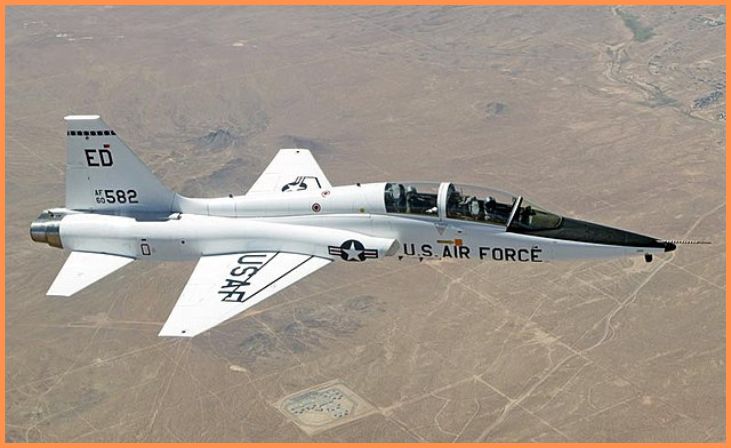
The Northrop T-38 Talon, taking its first flight on March 10, 1959, is a supersonic jet trainer that has been a stalwart in U.S. Air Force pilot training for over six decades. Recognized for its agility and performance, the T-38 has been instrumental in honing the skills of countless military aviators. Its sleek design and supersonic capabilities contribute to realistic and demanding training scenarios. Despite its age, the T-38 remains a fixture in pilot education, playing a crucial role in preparing future generations of Air Force pilots for the complexities of modern aerial warfare. The Talon’s longevity highlights its enduring value in military aviation training.
Convair B-58 Hustler
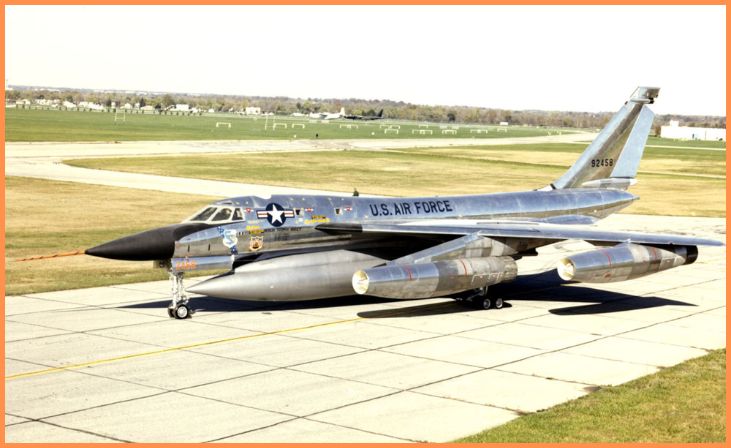
The Convair B-58 Hustler, with its maiden flight on November 11, 1956, was a pioneering supersonic bomber that served the U.S. Air Force during the late 1950s and 1960s. Recognized for its sleek delta-wing design and impressive speed, the B-58 was the first operational bomber capable of sustained Mach 2 flight. Despite its relatively short service life, the Hustler contributed to advancing strategic capabilities during the Cold War era. Retired in the early 1970s, the B-58 remains an iconic representation of Cold War-era aviation innovation, showcasing the technological leaps made in the quest for high-speed, high-altitude strategic bombers.
Also, Read – The World’s 8 Most Beautiful Thatched Roof Villages
Fairchild Republic A-10 Thunderbolt II
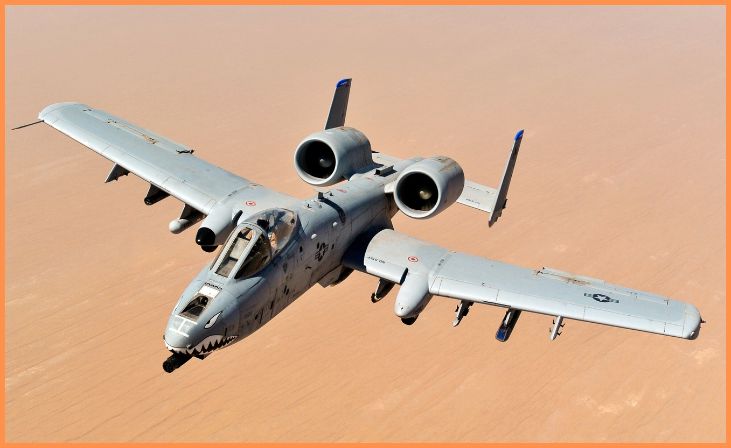
The Fairchild Republic A-10 Thunderbolt II, known as the “Warthog,” took its inaugural flight on May 10, 1972, and has since become an iconic close air support aircraft for the U.S. Air Force. Renowned for its durability and firepower, the A-10 features a distinctive design with a forward-mounted Gatling gun, designed to provide effective support for ground forces. Despite its introduction in the 1970s, the A-10 remains a crucial asset in modern conflicts, exemplifying its resilience and effectiveness in missions requiring precise and powerful air-to-ground capabilities. The Warthog’s unique design and role underscore its continued significance in the U.S. Air Force’s arsenal.
Lockheed Martin F-16 Fighting Falcon
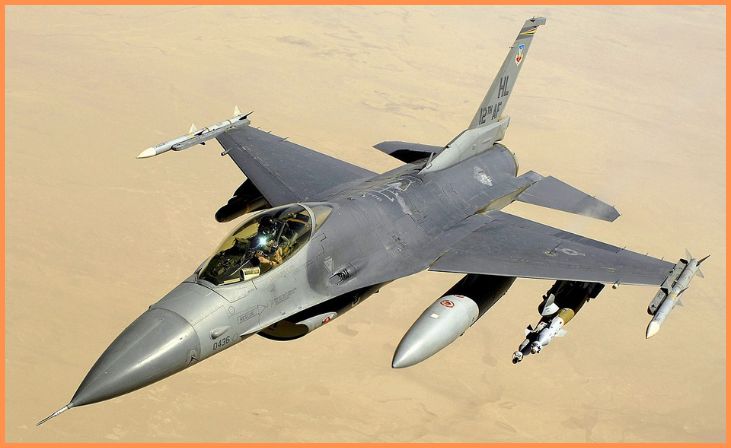
The Lockheed Martin F-16 Fighting Falcon, taking its maiden flight on January 20, 1974, is a versatile and enduring multirole fighter jet in the U.S. Air Force inventory. Celebrated for its agility and adaptability, the F-16 has served for several decades and has been widely exported to allied nations. Its design incorporates advanced technology, including a fly-by-wire control system and a bubble canopy for enhanced visibility. Over the years, the F-16 has undergone numerous upgrades to maintain its combat effectiveness. Its continued service reflects the aircraft’s success in balancing performance, affordability, and versatility, making it a cornerstone in the global fighter aircraft community.
Conclusion
In conclusion, the oldest aircraft in the USAF, exemplified by the Boeing B-52 Stratofortress and Lockheed U-2 Dragon Lady, stand as enduring symbols of a rich aviation history. Their legacy, marked by resilience and adaptability, reflects the Air Force’s evolution over the years. As the USAF navigates the challenges of modernization, these venerable aircraft emphasize the importance of honoring heritage while embracing the future. The ongoing commitment to their preservation echoes the Air Force’s dedication to preserving the lessons and achievements that have shaped its formidable presence in the skies.
FAQs
The Boeing B-52 Stratofortress holds the distinction as one of the oldest aircraft still in active service with the US Air Force, having been operational since the 1950s.
The B-52’s longevity can be attributed to its adaptability, continuous upgrades, and versatile capabilities. Its design allows for modifications and improvements, ensuring its relevance across changing military landscapes.
The Lockheed U-2 Dragon Lady is a reconnaissance aircraft known for its high-altitude capabilities. It plays a crucial role in intelligence gathering, surveillance, and reconnaissance missions.

